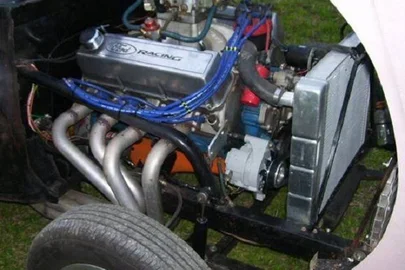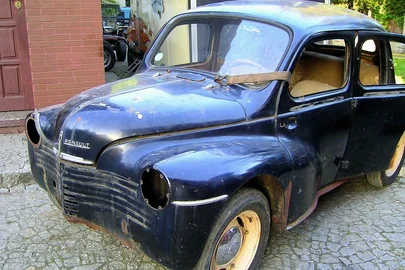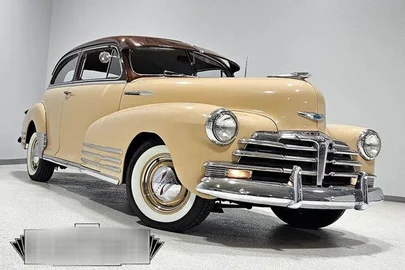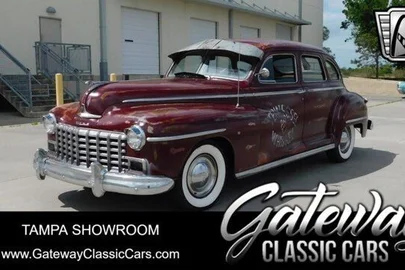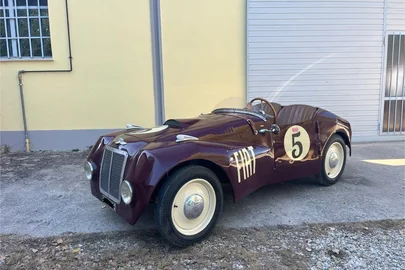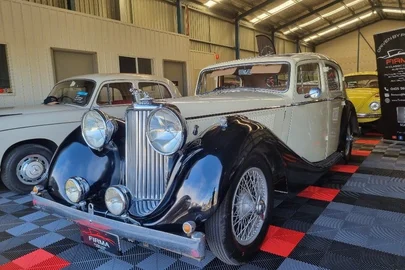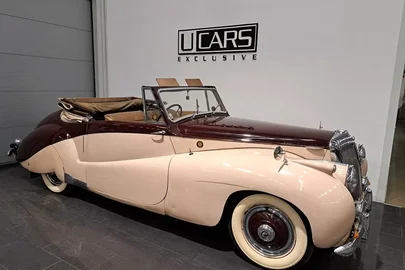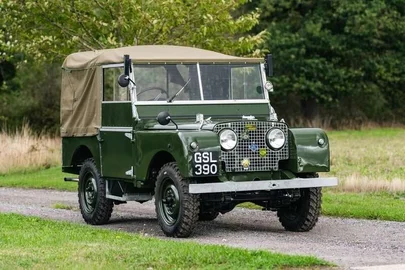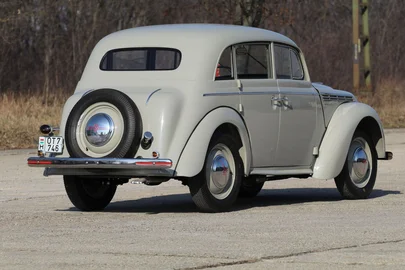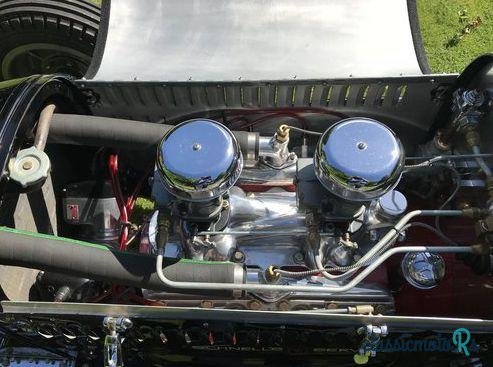
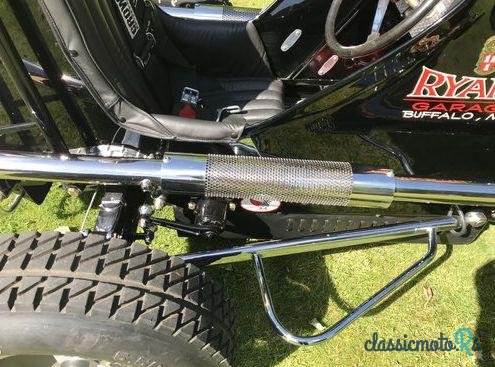
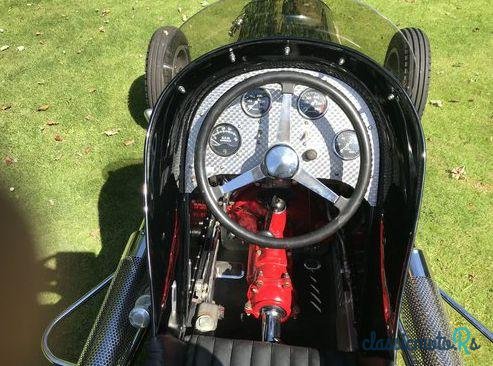
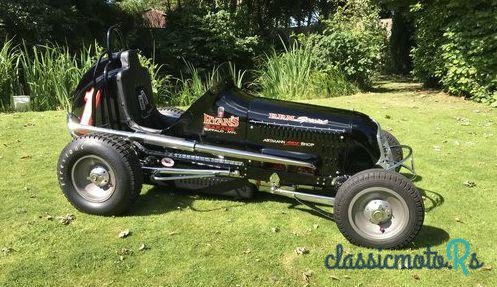
4 photos
1947' Ford V8 Midget Racer
Signaler cette annonce!Évaluer!Ajouter aux favoris
£22,000Publié 29 Juin 2018ID: K6oIDX
Périmée
il y a 7 années, 5 mois
il y a 7 années, 5 mois
Information from the owner
Âge: 71 années
Couleur de la carrosserie: Noir
Commentaires du vendeur sur 1947' Ford V8 Midget Racer
— Outstanding build quality V8-60 Racing Flathead power. Period correct parts
— Aluminium bodywork. High-quality black paint finish with period style race lettering
— Started regularly and much admired it hasn't been used 'in anger'.
— The UK-based 'Grand Prix Midget Club' (Chairman Martin Brundle) is very active
— Would attract lots of interest on a show stand at Goodwood or any major motorsports event.
In the 1930s and 1940s, America was gripped by a new kind of motorsport – midget racing. Modelled on the larger cars that raced at Indianapolis, midget racers competed across the country on tracks in football and baseball stadia, at county fairs, on purpose-built quarter-mile ovals and even on rough tracks carved out of cornfields. For nearly two decades midget racing took place seven nights a week and twice daily at weekends.
Most racing organisations set engine capacity limits between 100 and 140 cubic inches, limiting the choice of passenger car engines for constructors so that most early midgets were powered by outboard motors or motorcycle engines. In 1934, Fred Offenhauser created a powerful four-cylinder, 98-cubic-inch midget engine based on the famous Miller racing engine and “Offys” quickly became dominant in midget racing - though not all could afford them. In 1937, Ford launched a 136 cubic inch, 60 horsepower V8 engine intended as a more economical alternative to their larger flathead V8 engine. At last, there was an alternative for 'cash-strapped' midget racers that was able to challenge the dominance of the 'Offy' and V8-60s remained successful in competition into the 1950s.
The first midget racers were constructed at home by enthusiastic young men, however, as the sport grew in popularity a number of professional constructors arrived on the scene. One such constructor was Joe Silnes, a Norwegian born artisan who applied his craftsmanship to everything from midget racers to Indy cars. In 1990, a complete midget body and frame were discovered that had been built by Silnes around the time of the Second World War. A collector in Minnesota purchased them and commissioned Duane Nelson, Denny Wagner and Pat Mandel to reconstruct a finished midget racer using only period correct parts. Rick Schell managed to source a V8-60 racing flathead, with an Edelbrock intake manifold and high compression cylinder heads breathing through dual Stromberg 81 carburettors and this was returned to good health and installed in this sparkling little racer. The restoration took place over two years and the car you see today is the result of their craftsmanship.
The aluminium bodywork was given a high-quality black paint finish with period style race lettering and the seat was finished in black leather. The suspension is by transverse leaf springs and the brakes are Bell drums at the rear. All brightwork was either polished aluminium or chrome plate and the cockpit was finished with Stewart-Warner gauges and a Bell steering wheel.
This wonderful car is finished to an incredible standard and must be seen to be appreciated. In 2009, the completed racer was sold to a prominent UK collector at the Hershey Auction for an impressive $41,800. Our vendor bought the car in 2015 from Silverstone Auctions and although it has been started regularly and much admired it hasn't been used 'in anger'.
The UK-based 'Grand Prix Midget Club' (Chairman Martin Brundle) is very active and would be pleased to point a new owner in the right direction when it comes to competition or alternatively, this evocative little racer would attract lots of interest on a show stand at Goodwood or any major motorsports event.
— Aluminium bodywork. High-quality black paint finish with period style race lettering
— Started regularly and much admired it hasn't been used 'in anger'.
— The UK-based 'Grand Prix Midget Club' (Chairman Martin Brundle) is very active
— Would attract lots of interest on a show stand at Goodwood or any major motorsports event.
In the 1930s and 1940s, America was gripped by a new kind of motorsport – midget racing. Modelled on the larger cars that raced at Indianapolis, midget racers competed across the country on tracks in football and baseball stadia, at county fairs, on purpose-built quarter-mile ovals and even on rough tracks carved out of cornfields. For nearly two decades midget racing took place seven nights a week and twice daily at weekends.
Most racing organisations set engine capacity limits between 100 and 140 cubic inches, limiting the choice of passenger car engines for constructors so that most early midgets were powered by outboard motors or motorcycle engines. In 1934, Fred Offenhauser created a powerful four-cylinder, 98-cubic-inch midget engine based on the famous Miller racing engine and “Offys” quickly became dominant in midget racing - though not all could afford them. In 1937, Ford launched a 136 cubic inch, 60 horsepower V8 engine intended as a more economical alternative to their larger flathead V8 engine. At last, there was an alternative for 'cash-strapped' midget racers that was able to challenge the dominance of the 'Offy' and V8-60s remained successful in competition into the 1950s.
The first midget racers were constructed at home by enthusiastic young men, however, as the sport grew in popularity a number of professional constructors arrived on the scene. One such constructor was Joe Silnes, a Norwegian born artisan who applied his craftsmanship to everything from midget racers to Indy cars. In 1990, a complete midget body and frame were discovered that had been built by Silnes around the time of the Second World War. A collector in Minnesota purchased them and commissioned Duane Nelson, Denny Wagner and Pat Mandel to reconstruct a finished midget racer using only period correct parts. Rick Schell managed to source a V8-60 racing flathead, with an Edelbrock intake manifold and high compression cylinder heads breathing through dual Stromberg 81 carburettors and this was returned to good health and installed in this sparkling little racer. The restoration took place over two years and the car you see today is the result of their craftsmanship.
The aluminium bodywork was given a high-quality black paint finish with period style race lettering and the seat was finished in black leather. The suspension is by transverse leaf springs and the brakes are Bell drums at the rear. All brightwork was either polished aluminium or chrome plate and the cockpit was finished with Stewart-Warner gauges and a Bell steering wheel.
This wonderful car is finished to an incredible standard and must be seen to be appreciated. In 2009, the completed racer was sold to a prominent UK collector at the Hershey Auction for an impressive $41,800. Our vendor bought the car in 2015 from Silverstone Auctions and although it has been started regularly and much admired it hasn't been used 'in anger'.
The UK-based 'Grand Prix Midget Club' (Chairman Martin Brundle) is very active and would be pleased to point a new owner in the right direction when it comes to competition or alternatively, this evocative little racer would attract lots of interest on a show stand at Goodwood or any major motorsports event.
